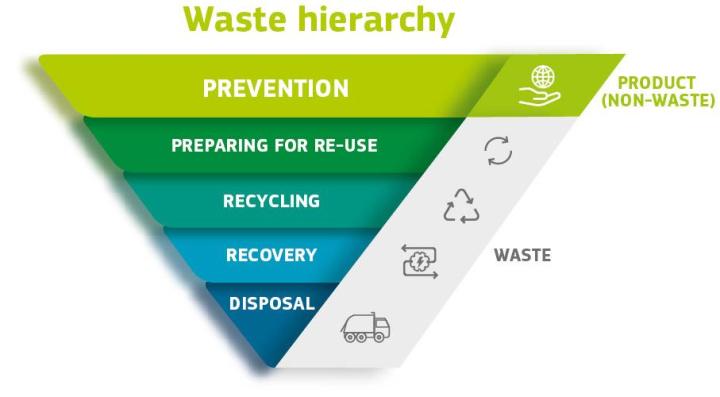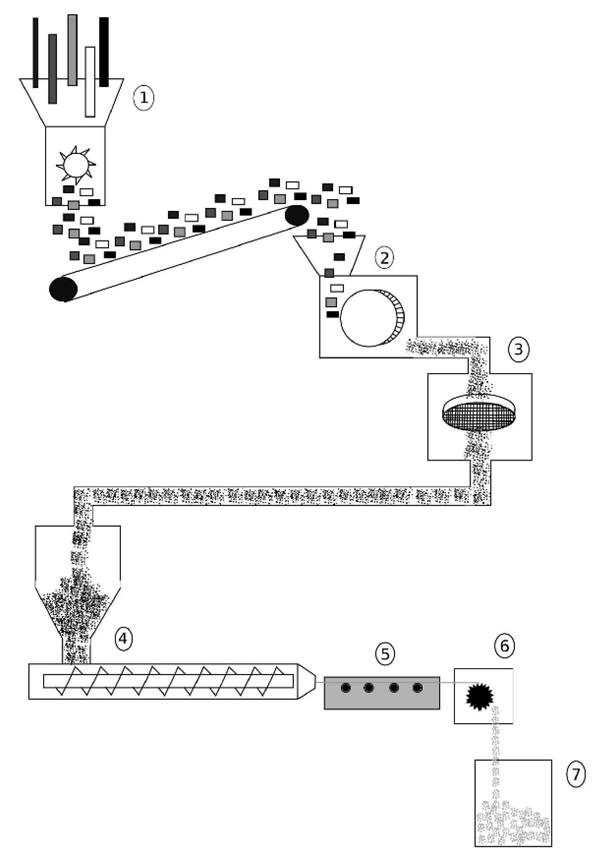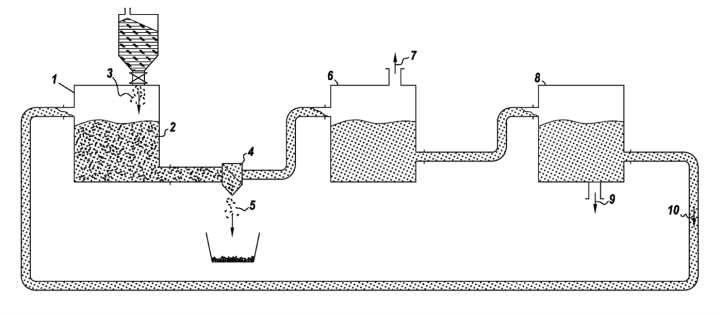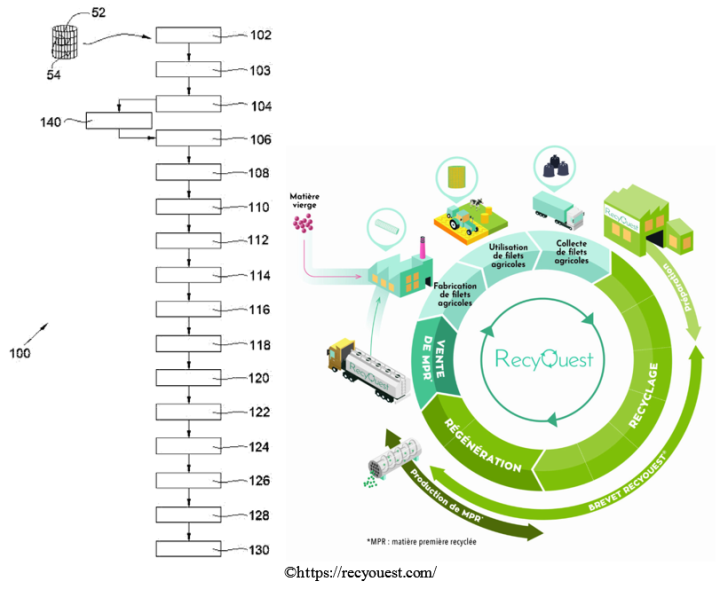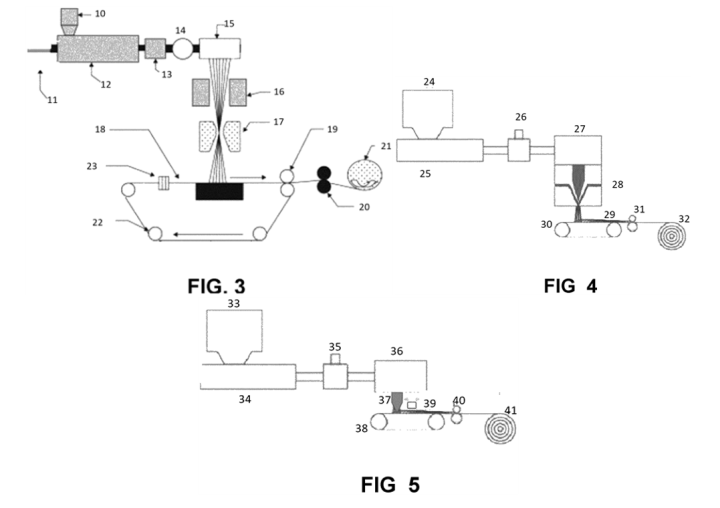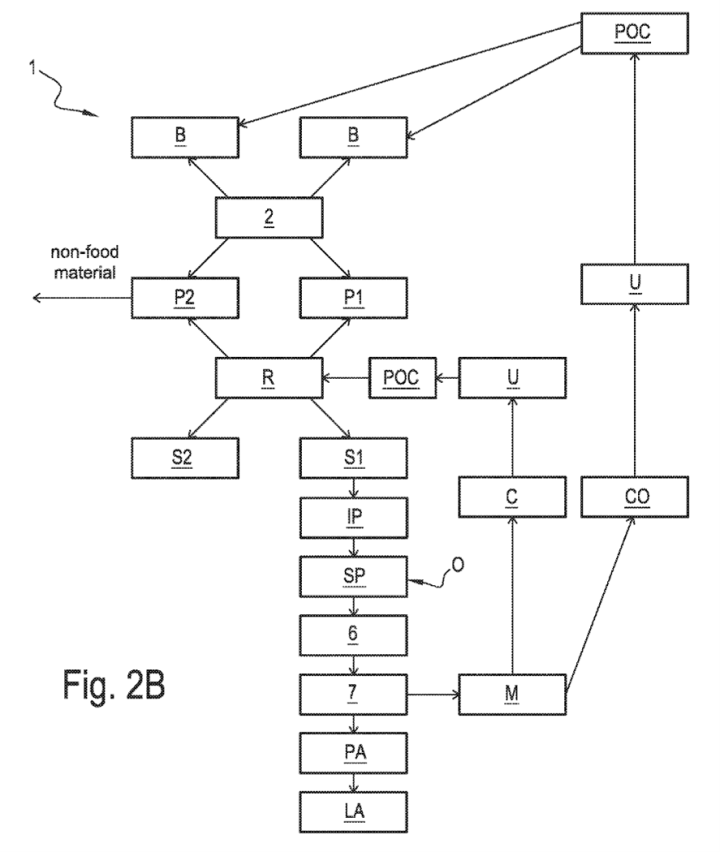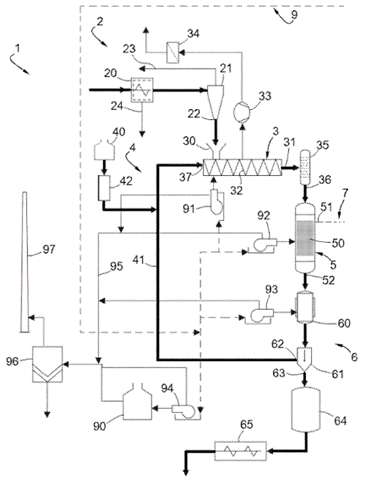According to the waste hierarchy introduced by the Waste Framework Directive, waste prevention should be given priority. However, when products do become waste, the presence of contaminants is one of the main challenges to their valorisation through re-use or recycling.
These contaminants may be inherent to the product, such as processing aids, functional fillers or coatings, or related to the application in which the product has been used. While the latter contaminants need to be removed in preparation for reuse, both types of contaminants need to be removed for optimal recycling of the waste, either in a pre-manufacturing step or in-situ during the manufacturing step of making new products from the waste.
This month's patents selection focuses on solutions for the removal of contaminants/impurities/unwanted components from textile and plastic waste prior to processing into new products.
Process for recycling lacquered plastics
Patent number: DE102023104535
Publication date: 2024-08-29
Applicant(s): Recosal GmbH
Inventor(s): GROSS CHRISTOPH
Summary
Plastic products are frequently used for motor vehicle parts. If, for example, plastic bumpers with unpainted surfaces are recycled, incorrectly molded bumpers and bumpers removed from scrap vehicles are coarsely comminuted to a size of approximately 3 mm cubes and then mixed with pure or new material and reused for molding bumpers. This is possible since the physical properties of recycled plastic material are not significantly worse than those of virgin material. In the case of plastic parts with painted surfaces, however, plastic materials recovered in this way cannot be reused for identical new parts. If lacquered plastic parts are comminuted, the lacquer impairs the physical properties of the plastic material, such as impact strength, elongation and surface quality, to such an extent that a satisfactory quality for a new part can no longer be achieved. For this reason, painted plastic parts which have been incorrectly molded or removed from scrap vehicles are deposited or burned in refuse dumps, which is harmful to the environment.
It is therefore the object of the invention to provide a process for recycling lacquered plastic materials which makes it possible, without the addition of chemicals, to obtain granules which correspond in their physical properties almost to those of virgin material. This object is achieved according to the invention by a process in which (a) the plastic parts are comminuted in one or more steps to a particle size in the range of approximately 1 to 2,000 µm, (b) the plastic particles are then fed to an extruder, with which a plastic strand is extruded after a melting and kneading phase and filtration, and (c) the plastic strand is then granulated. It has surprisingly been found within the scope of the invention that in this way a plastic granulate is obtained from pure-grade plastic parts, with which it is also possible to produce lacquered plastic parts whose physical properties almost correspond to those of virgin material. The process according to the invention is carried out without the addition of chemicals. Neither a decomposition agent for the coating nor an adhesive is required.
Method for recycling polyvinyl chloride products
Patent number: WO2024/062323
Publication date: 2024-03-28
Applicant(s): UNILIN BV
Inventor(s): LEDEGEN SAM
Summary
Although polyvinyl chloride is a thermoplastic polymer, recycling of polyvinyl chloride products is problematic. This is mainly due to the additives and impurities that PVC products comprise. Most polyvinyl chloride products - and certainly those made of soft PVC - comprise plasticizers. Phthalates are known plasticizers. Some types of phthalates that were used in the past as plasticizers in PVC have now even been banned. Furthermore, polyvinyl chloride products can comprise, inter alia, fillers, colorants, and heavy metals. The composition of PVC products is strongly dependent on their application. This makes recycling of end-of-life PVC products particularly difficult.
The object of the invention is to provide a better and widely applicable method for recycling polyvinyl chloride products so that the polyvinyl chloride polymer from these products can be used for producing new polyvinyl chloride products. The invention relates to a method for recycling polyvinyl chloride (PVC) products. The method is characterized in that the method comprises the step of treating the polyvinyl chloride products to be recycled in an ionic liquid. The method according to the invention has the advantage that separation of the polyvinyl chloride from the additives (such as plasticizers) and contaminants can be achieved in an efficient manner. This allows the polyvinyl chloride to be reused for a wide range of applications.
Method for recycling filament thermoplastics
Patent number: FR3151519
Publication date: 2025-01-31
Applicant(s): RECYOUEST
Inventor(s): MOISSON ROSA MARCELA
Summary
The present invention relates to a process for recycling filamentary thermoplastics contaminated with other materials, in particular high-density polyethylene (HDPE) nets, and to a recycling line comprising the means for implementing said recycling process. The invention relates to a recycling process (100) for thermoplastic filaments (52) mixed with undesirable materials (54). The recycling method comprises a feeding step (102), a spreading step (103). The method continues with a horizontal cutting step (104) where the sheet of thermoplastic filaments (52) and undesirable materials (54) is leveled, then a first cutting step (106) where the sheet is cut in a first vertical direction, and a second cutting step (108) where the sheet sections are cut in a second vertical direction orthogonal to the first vertical direction. The method is continued by a fraying step (118), a threshing step (120), a pre-crushing step (122), an agglomeration step (124), a crushing step (126), a separation step (128), and finally a recovery step (130).
Methods of reclaiming textile waste and recycling it without dyeing nor creating microplastic contamination in water system
Patent number: WO2024/098139
Publication date: 2024-05-16
Applicant(s): HEAT-MX WORLDWIDE
Inventor(s): CHANG SAE
Summary
The present technology relates to methods of recycling textile waste from various sources without putting the textile through dyeing and all its related processes such as bleaching, whitening, fixing, etc., nor creating microplastic contamination in water system. In addition, the present technology relates to methods of enabling the recycling of the formerly undesired process waste from various manufacturing sources, e.g., cut-and-sew- process, etc., with the above-mentioned principal, i.e., no dyeing or dyeing-related processes, in various compositions of 100% synthetic and blends of synthetic fibers.
According to some aspects, the present technology relates to a method for converting a blend of thermoplastic synthetic materials to a non-woven structure, the method comprising: i) melting the blend of thermoplastic synthetic materials to a temperature above the melting temperature of the blend of thermoplastic synthetic materials to obtain a web of polymer emulsion, ii) applying the web of polymer emulsion onto a conveyer belt; and iii) cooling the web of polymer that has been through the conveyer to generate a non-woven structure. In some aspects, the blend of thermoplastic synthetic material is a textile waste. In some aspects, the blend of thermoplastic synthetic material is converted to a non-woven structure without the use of a dyeing process. In some aspects, the blend of thermoplastic synthetic material is converted to a non-woven structure without creation of microplastics. In some aspects, the blend of thermoplastic synthetic material comprises polyethylene (PET) and polypropylene (PP). In some aspects, the blend of thermoplastic synthetic material comprises 65% PET and 45% PP.
Photooxidation treatment of post-consumer recyclate
Patent number: WO2024/263167
Publication date: 2024-12-26
Applicant(s): EQUISTAR CHEMICALS LP
Inventor(s): REINKING MARK; BRIGGS NICHOLAS; HORWATT STEVEN; STREBEL JEFFREY; HUNDLEY MICK; PODBORNY WILLIAM; MUNJ HRISHIKESH; BO LI
Summary
The downside to the demand for polyolefin plastics is an increase in plastic waste. As such, there is considerable interest in developing methods to recycle plastic waste. In addition to reducing the amount of plastic waste, other benefits of recycling plastic waste include reducing carbon footprint, consuming less energy, improving water consumption, and using less raw materials. Non-polyolefinic polymers or the other contaminants provide stress points in articles made from or containing the recycled plastic resin pellets.
The present invention presents a method for recycling plastic waste including the step of photooxidizing plastic waste, wherein the plastic waste is selected from the group consisting of post-consumer recyclate and post-industrial recyclate and the photooxidizing step is selected from the group consisting of ultraviolet photooxidizing, visible-light photooxidizing, near-infrared photooxidizing, and oxygen-derived plasma treating. In the case of polymer compositions, the level of decomposition depends upon the structure and components of the polymer composition. Bond energies, the concentration of chromophoric groups, the concentration of impurities or contaminants, the reactivity of hydrogens on secondary and tertiary' carbon atoms, oxy gen diffusivity, and the presence of stabilizers affect the degree and rate of photodegradation. In some instances, photodegradation initiators are ketones, quinones, and peroxides. In some instances, pH, temperature, or pressure affect the degree and rate of photodegradation.
System and method for the production of food-grade recycled polyolefins
Patent number: WO2024/166005
Publication date: 2024-08-15
Applicant(s): SACMI COOPERATIVA MECCANICI IMOLA SOCIETA' COOPERATIVA
Inventor(s): FALZONI ALESSANDRO
Summary
One of the problems in the field of polyolefin recycling is that the polyolefins in plastic waste come from different sources and, depending on their primary use, may contain different quantities of contaminants; for example, a polyethylene used for detergent bottles can absorb contaminants that might not be removed during the recycling process, making it unsuitable for use in several applications, for example, in the food industry. Typical washing processes, however, can remove only the contaminants from the surface of the polymers and are unable to remove the organic substances which have migrated into the polymer.
This invention discloses a method for producing polyolefin food grade recyclates includes the following steps: collecting post-consumer plastic container bales (B); dividing the material provided by the bales into a first group (P1), formed of material used for beverage purposes, and a second group (P2), formed of material used for non-beverage purposes; shredding the first group of material to obtain plastic flakes; sorting the plastic flakes to derive a first subset (S1), formed of PO flakes and a second subset (S2), formed of PET flakes; processing the first subset of flakes through a polyolefin recycler (6), to obtain the polyolefin food grade recyclates.
Method for measuring trace constituent contained in thermoplastic waste plastic, method for recycling thermoplastic waste plastic
Patent number: JP5007929
Publication date: 2012-08-22
Applicant(s): UBE INDUSTRIES
Inventor(s): AKAHO TATSUFUMI; OTA YUKIO; KITA YASUO
Summary
In recent years, to reduce the burden on the environment, the recycling of thermoplastic synthetic resin products typified by automobile parts, home appliance parts, and the like as synthetic resin materials has been demanded, and many companies have studied effective recycling of such synthetic resin materials. Waste plastics deposit and become entrapped in a variety of hazardous substances to recover from a variety of articles. Therefore, it is necessary to measure minor components such as harmful substances contained in waste plastics. Since plastic products have hazardous substance content standards by product used, recycling waste plastics also needs to meet these usage standards. When waste plastics recovered from these various environments are recycled into products conforming to hazardous substance content standards, it is problematic to measure hazardous substance content in the total amount of waste plastics, such as costly to produce. Furthermore, melt-kneading the entire recovered waste plastic, pelletizing, and measuring the hazardous substance content has problems such as the cost of production.
An object of the present invention is to provide a method for easily measuring minor components such as harmful substances contained in waste plastics with extremely little error, without measuring minor components such as harmful substances contained in waste plastics by melt-kneading and pelletizing the entire recovered waste plastics. The present invention relates to a method for producing waste plastic, the method comprising the steps of: melt-kneading and pelletizing the entire amount of recovered waste plastic, simply measuring harmful substances contained in waste plastic with extremely little error, without measuring harmful substances contained in the waste plastic; An object of the present invention is to provide a method for recycling thermoplastic waste plastics or ground products thereof into plastic products having hazardous substance content standards by utilizing the results.
Process and plant for converting plastics into pyrolytic oils
Patent number: WO2024/069098
Publication date: 2024-04-04
Applicant(s): VALOREGEN SAS
Inventor(s): VALETTE AMÉLIE; PEREZ THIERRY
Summary
There are various processes such as gasification, pyrolysis, solvolysis and depolymerization, for degrading plastics, to obtain chemicals of lower molar masses, such as pyrolytic oils. Pyrolysis consists of a degradation, or cracking, of the polymer molecules subjected to a high temperature (generally between 300 and 900° C.) to obtain smaller molecules, in the absence of oxygen, with catalyst (pyrolysis called catalytic pyrolysis) or without catalyst (pyrolysis called thermal pyrolysis).
The invention relates to a process for converting plastic materials into pyrolytic oils, wherein: - the plastic materials are continuously fed into a preheating reactor (3) in order to be mixed and preheated at a preheating temperature to obtain a pasty mixture; - the pasty mixture is continuously transferred into a pyrolysis reactor (5) to be heated at a pyrolysis temperature, under an anaerobic or inert atmosphere, in order to be converted into synthesis gases and a solid reaction product; - the synthesis gases, containing condensable gases and uncondensable gases, are recovered on a first outlet (51) located above the permeable bed, and the solid reaction product is recovered on a second outlet (52) located below the permeable bed; - the condensable gases of the synthesis gases are condensed into pyrolytic oils which are recovered.





